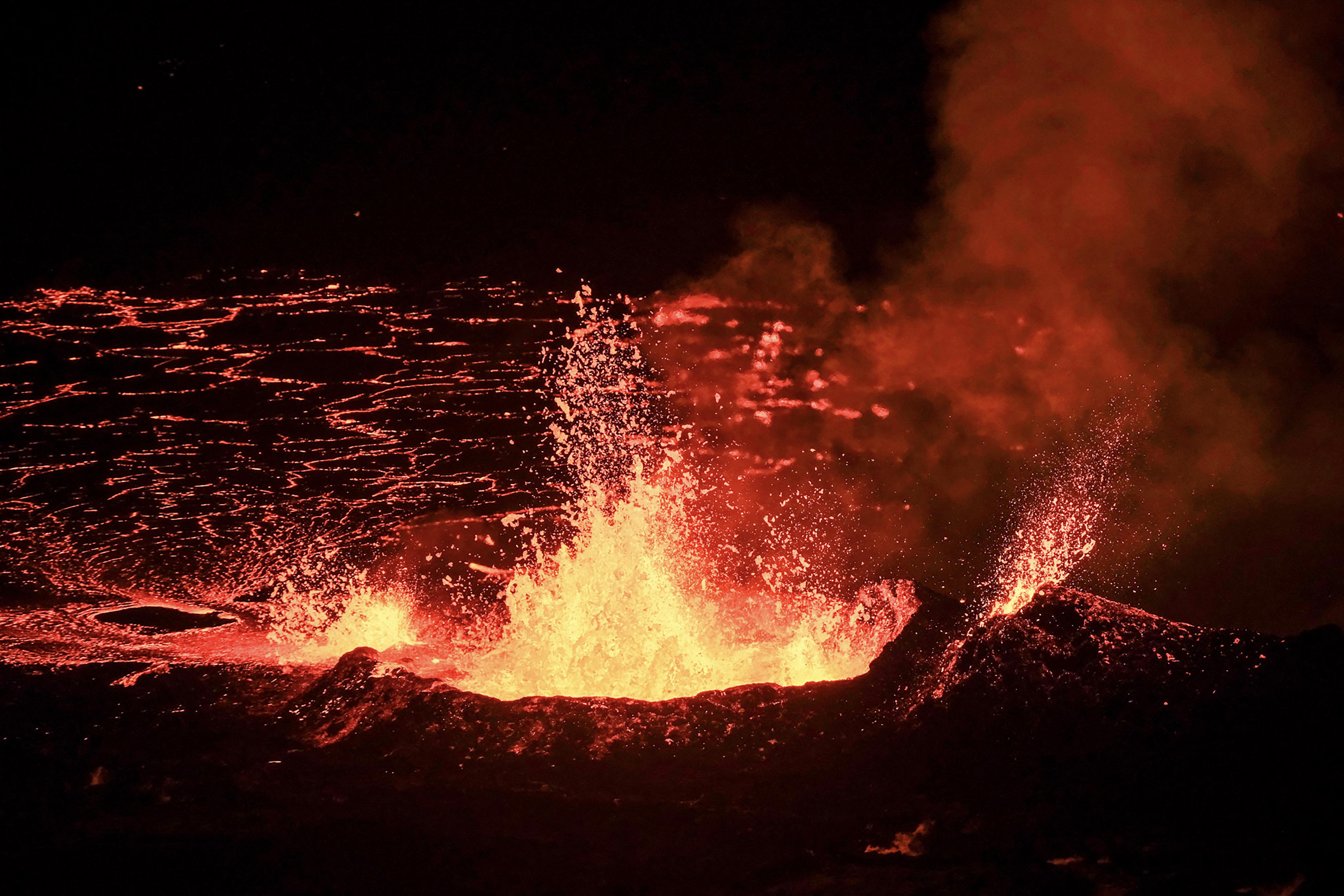On Nov. 10, a small town in Iceland cracked in half due to a sheet of magma moving between the Earth’s surface. Since then, scientists at the Icelandic Meteorological Office have been carefully tracking the magma’s movement. It seemed like an eruption might be imminent … but volcanos are fickle. It’s extremely hard to predict when lava will start spurting, or where in the Earth it will come from, according to Vincent Drouin, a scientist at the IMO whom we spoke with last month.
Then, on Monday night at 10:17 p.m. Icelandic time, lava burst above ground with little warning, in huge red curtains. (The town, which was evacuated back in November, is OK so far.) We checked back in with Drouin to learn the latest, and what the eruption means for the surrounding area. Our conversation has been condensed and edited for clarity.
Anna Gibbs: Where were you when you found out the eruption had finally happened?
Vincent Drouin: I was at the movie theater when it happened. When I went to the movie, there was nothing happening. It was just normal, very quiet. When I came out, there was an eruption. It was so fast.
I read that there was an “earthquake swarm” in the hours before the eruption. What is that?
One earthquake once in a while doesn’t mean anything, but when there’s an earthquake every few seconds or tenths of seconds, that means the magma is moving. We can’t mistake it for anything else. That’s what we saw Monday night. But then the magma reached the surface much faster than we expected.
So the earthquakes started and then the eruption happened—all within the time period of your movie. That’s fast.
Yeah, we had just one hour and 15 minutes between the first earthquake and the eruption. We were expecting maybe a few more hours. So it was really surprising.
Did you have to jump into action once the eruption started?
I went to bed relatively early. One of my specialties is satellite data, and I have to wait for that data to come. So I just sent an email to my contact at the agency to ask them if they have any data and to send it to me as soon as possible. But some of my colleagues were working all night, flying around the area and mapping the eruption.
The fissure that opened up in the town is 4 kilometers long, and I know there was a lot of uncertainty about where the eruption would end up happening. What’s the situation now?
The eruption started in the middle of the fissure. But then the eruption started to extend outside the center, and the fissure started to grow too. We were worried that if the fissure continued propagating southwest, then it might reach the slope and the lava could start flowing to other cities, which would have been bad. But very quickly, after a few hours, the cracks started to close and focused on one part of the fissure. You go from, like, a curtain of fire, to only one vent, and then you start building a crater that becomes bigger and bigger.
Now the eruption is concentrated in the middle of the fissure again, which is perfect because there’s nothing there. There was no one in the area, except people studying the fissure. So it was not as stressful of a situation as we had one month ago, when there were a lot of people in the city sleeping and the magma was moving very fast below the city. That was very stressful. The stakes are lower now, at least when we talk about people’s lives. Even for infrastructure, so far—it will take a while before any infrastructure gets damaged.
There’s a power plant near the fissure. Is there any concern that that gets damaged?
So far the lava is not going there, but people are still building dams to protect it just in case. It’s critical because it provides cold water and electricity for a huge part of Reykjanes Peninsula. If it was destroyed, and we lost our electricity and water for a huge part of the peninsula during the winter, it would be even more damaging than losing the city of Grindavik. So that’s why they’re starting to build the walls around it. If the lava did reach it, that would only be able to divert the lava for a while, but it would help.
So what’s going on under the Earth’s surface right now?
Around midnight on Monday night, the dike [a vertical sheet of magma within the crust] stopped growing. So we’ll see. The problem is: It’s stable now, like how it was on Monday at 8 p.m., but we don’t know what would cause a new pulse of magma. So we could have another fissure or a new dike extension in a few days. That’s why we have to keep paying attention.
Do we have any idea how long this eruption will last for?
It’s hard to know. The extrusion rate started high and decreased exponentially to very little. If it follows the pattern, it could be finished within a few days or a week. But a previous eruption in the area started really small and then got bigger, and it was constant for, like, six months.
It all depends on what’s driving the pressure behind the flow. If it gets too small, the lava flow won’t be able to keep the conduit to the surface open, so it will close naturally. But we don’t really know anything about what’s driving that pressure. The source is too deep, so we can’t really see it. So yeah, we’re in the dark for this.
